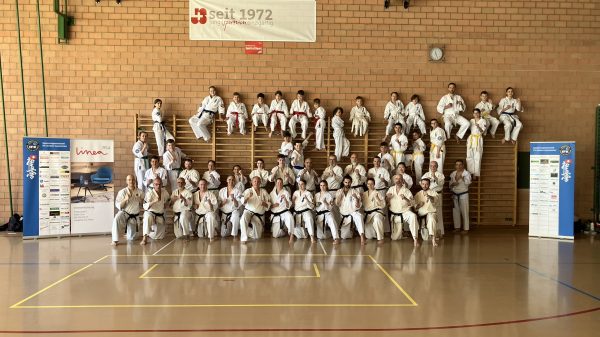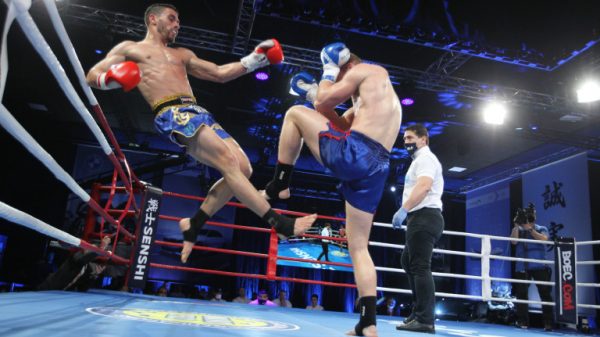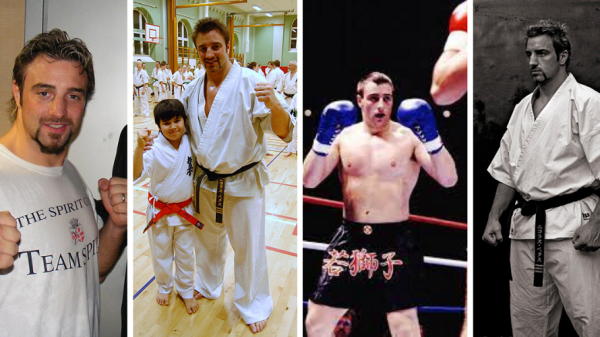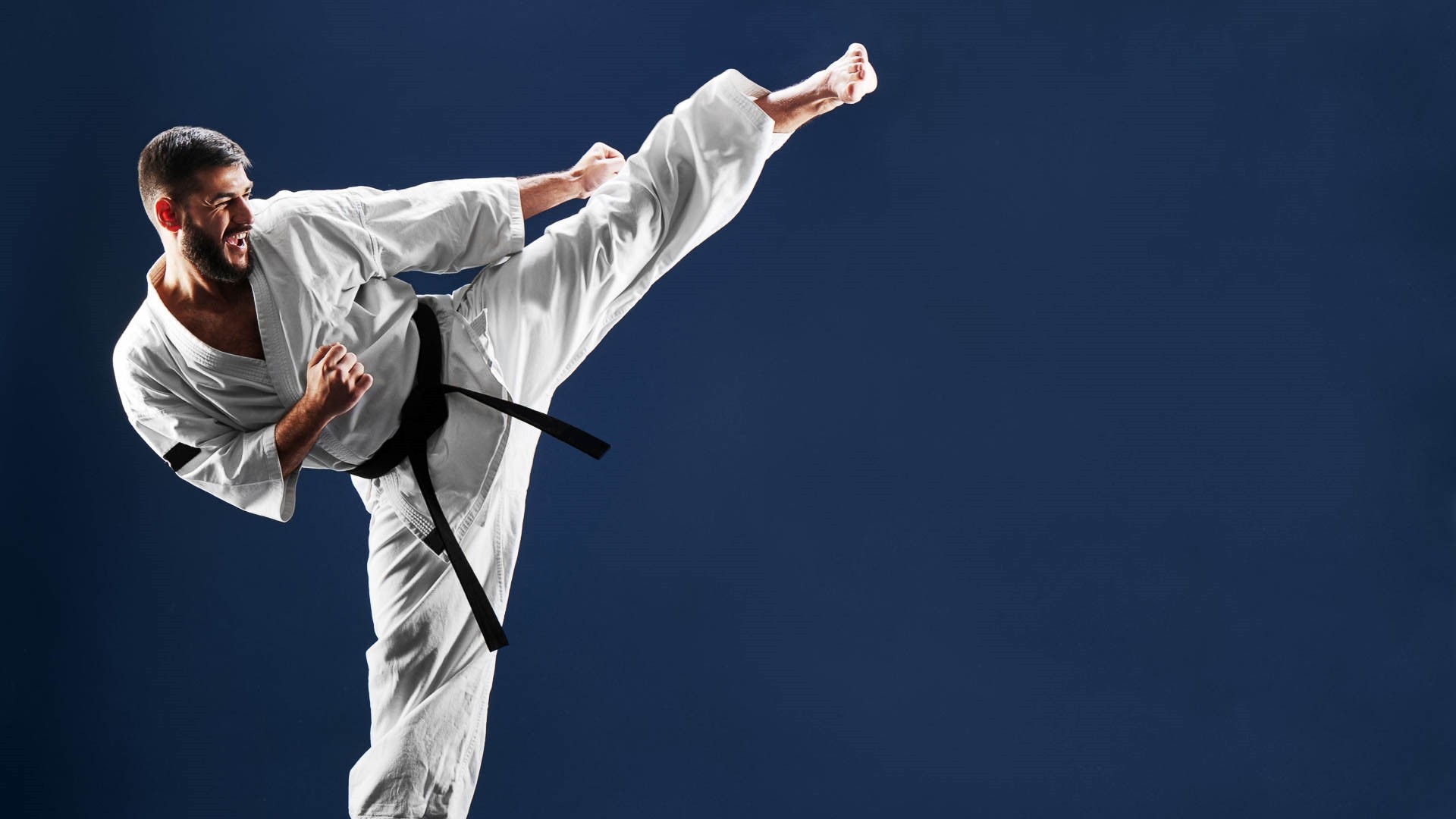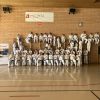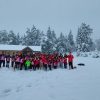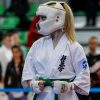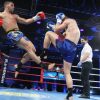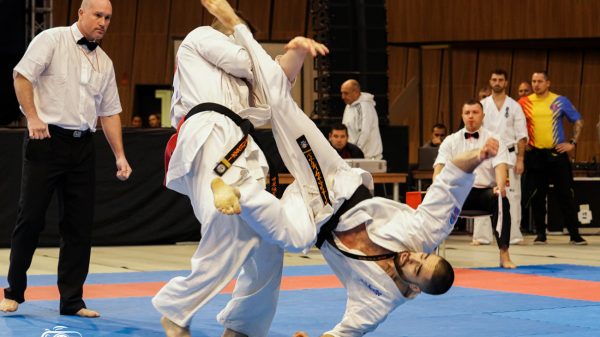The purpose of wearing a karate uniform is to show respect for your school, your instructor, and the martial art itself, but what is a karate uniform called?
Karate practitioners wear a traditional uniform called a gi (pronounced ghee).
While many people call the clothes we wear for martial arts training a “gi,” it’s important to note that proper names vary between martial arts. For example, if you practice karate, you would refer to your uniform as a karate gi, while judo practitioners call theirs a judogi.
The karate gi is an integral part of the sport and culture. It’s not just a karate uniform—it’s a symbol of what you’ve been through, what you’re about to go through, and what you hope to achieve. The gi represents your dedication, discipline, and respect for yourself and others. It also helps you stand out from the crowd when you’re on stage.
The Origins Of The Gi
The history of this karate uniform goes back to 1882 when Kano Jigoro founded judo—it was originally called “Kōdōkan.” He designed this uniform to reflect his philosophy that learning how to fight was an integral part of self-defense training.
The modern karate gi has evolved from the Judo uniform, which samurai warriors originally wore in Japan. The Judogi began as more of an undergarment than an outer garment. They designed it to keep its wearer warm when practicing outdoors during the cold winter months. Students used it as protection against injuries caused by falling on hard surfaces.
The gi, or karate uniform, symbolizes a student’s commitment to their martial arts journey. The gi is a representation of this commitment and dedication. It demonstrates that you understand your place in the world and are aware of your responsibilities as an adult and as a martial artist.
What Makes a Proper Gi
A gi has several facets that make it a perfect fit for its purpose. A good gi will have the following characteristics:
Durable Fabric
The fabric should be durable enough to withstand repeated washing and drying. It should also be resistant to tearing and stretching when rolling or gripping onto it during sparring sessions.
Breathable Material
The material should allow for air circulation so that you don’t have sweat stains on your uniform after class ends (or worse yet, during class). This material is especially important if you live in a hot area where temperatures can soar into triple digits during the summer months.
Comfortable Fit
A good gi will fit well without being too loose or too tight around your torso area so that it doesn’t restrict your movement while grappling/striking with another person during training sessions. It should also have plenty of room for comfort around the wrists and ankles, so there’s no chafing or rubbing against those areas while practicing moves.
A few common mistakes that make their karate gi uniform less than perfect:
Buying a smaller size than what you need: If you don’t want your uniform fitting like a sausage casing around your body, then we recommend buying one size larger than the usual range offered by most manufacturers. Not washing your karate gi after each use: It can cause stains and other problems with the fabric over time, which will make it harder to clean later on when you need to replace it. Fabric softener will coat the fibers: Don’t use a fabric softener when washing your gi. Fabric softener will coat the fibers of your gi in a film that you can’t wash out.
How to Properly Take Care of Your Gi
Here’s how to take care of your karate gi so that it lasts a lifetime:
Don’t Keep the Gi in a Bag After the Training Session
Instead, hang it up so that it can air out and dry properly. It will help prevent mold or mildew growth inside the fabric and keep it feeling clean longer.
Wash Your Gi After Wearing Each Time
That’s because dirt can build up over time and cause odor issues later on down the road if left untreated. Bacterial skin infections like ringworm and staph are serious and rampant issues in martial arts, this is a good way to prevent it. Plus, washing helps keep that new-gi smell around longer.
Avoid Hot Water
Hot water can shrink your gi, especially if you use high heat. Stick to cold water when washing the gi.
Bleach is Not Allowed
Bleach breaks down the fibers in your karate gi, causing it to lose form and become brittle over time. If you have stains on your gi, try using vinegar instead. Vinegar works wonders on stubborn stains like blood or sweat—make sure not to let it sit for too long, or you’ll have an even bigger stain.
Do not Tumble Dryer
You’ll want to hang it dry instead. When hanging dry, make sure there’s plenty of air circulation around your gi so that mold doesn’t grow inside.
Don’t Wash gi With Other Clothes
It will cause the dye in the fabric of your gi to get mixed with the dyes from other clothes, which can result in faded colors or even holes in the fabric. Don’t wash it with other clothes if you want To keep your karate gi looking new for as long as possible.
Can I Wear a Different Color?
Every specific martial art has its uniform associated with it. The color of that uniform symbolizes the martial art’s style and traditions. These uniforms help distinguish between different martial arts genres, so if you’re looking to join a specific style or school, it’s important to know what the uniform looks like.
The main reason for this association is so that you can tell at a glance what kind of martial art someone practices. It’s also helpful for instructors to distinguish students by their gi colors to give them more personalized instruction.
Different Types of Martial Art Uniforms
Wearing gi’s in a different color is a no-no. There are many kinds of martial art uniforms because it depends on the discipline or style of martial arts you’re practicing.
Taekwondo
The white gi typically worn by Taekwondo practitioners represents uniformity and equality, as everyone begins training in their white gi’s and works their way towards earning their colored belts. It also symbolizes the purity of their intentions when they start training. The belt’s color is also a signal of one’s skills; for example, a black belt signifies an expert ability level.
Judo
The uniform gives you flexibility and protection, but it should also allow you to move freely. The uniform consists of pants and a jacket-like top that connects at the waist with a belt. Cotton is a good material for a uniform because it’s not too hard or thick. The color of your gi will depend on the tournament or match. The first contestant will wear a blue uniform, while the opponent will wear a white or off-white uniform. The color of the uniform makes it easier for spectators to differentiate between contestants from afar. A belt shows your rank, which is important to know if you’re going to compete.
Karate
White is the most popular color because you can wear it with any belt color, making it easy to match up with other students in class. The weight choice depends on what kind of training you’re doing. For example, if you’re working on strength or speed during your practice session, choose the heavier weight gi. Opt for a lighter-weight one if you’re working on flexibility and agility.
They make karate uniforms from cotton. Cotton naturally stretches and comes in three weights: heavy, medium, and light. During training, your uniform will stretch out and become loose as you move around. If your gi is too tight, there won’t be enough room for it to stretch out while you’re working out.
Jiu-jitsu
In Brazil, the Gracie family developed Jiu-jitsu and came up with a uniform that allowed easy identification between competitors and protected the participants from injury. These uniforms come in different weights and weave and a variety of colors, and they allow for decoration on the uniform—embroidery or patches.
The belts used to mark rank are long enough to go around one’s waist twice. It’s important because it prevents them from slipping off during training or competition.
As one advances through the ranks of jiu-jitsu, their belt will change color according to a system similar to judo: for adults, the ranking is white belts for beginners, then blue, purple, brown, and eventually black; for kids, the ranking goes yellow, orange, or green.
Conclusion
In today’s article, we took a look at the most common types of uniforms worn in karate. These uniforms vary from school to school and instructor to instructor, so understanding the different options is an important first step for any prospective karate student.
With that knowledge, you’ll be able to make smart decisions about which group or individual you want to join and what kind of karate gi you want to wear. It’s a symbol of what you do and who you are. Honor the tradition, honor the path you walk on, and respect those around you who have chosen to follow it.


